
How to choose a small-size kitchen
Small in size, but big on performance. Today, small-size kitchens are no longer necessarily associated with cheapness. Indeed, more and more brands are offering designer kitchens capable of concentrating top performance levels in limited square footage. Compact, functional, multi-accessorised kitchens, where dishes worthy of a great chef are prepared. To cook like in a Michelin-star restaurant, it’s not just the size that matters, but how the kitchen is designed too.
That’s why small kitchens prove so popular. Versatile, ergonomic and attractive to look at, they are perfect both to decorate a small city apartment as well as your seaside home or mountain holiday chalet. The important thing is that you pick the right configuration, and the most suitable colours and materials. And optimise all the available space as best you can.
Let’s look at the various aspects to consider when buying a small designer kitchen, together.
1. Bespoke kitchens to exploit every single centimetre
It is extremely important for small-size kitchens to be bespoke. Indeed, a bespoke kitchen can be tailored entirely to the customer’s specific requirements. In terms of size, and more. When the room used for the kitchen is tight, the space must be optimised and as functional as possible.
Moreover, bespoke kitchens allow you to exploit every single centimetre available, even in settings with irregular shapes, in the presence of alcoves or with out-of-square walls.
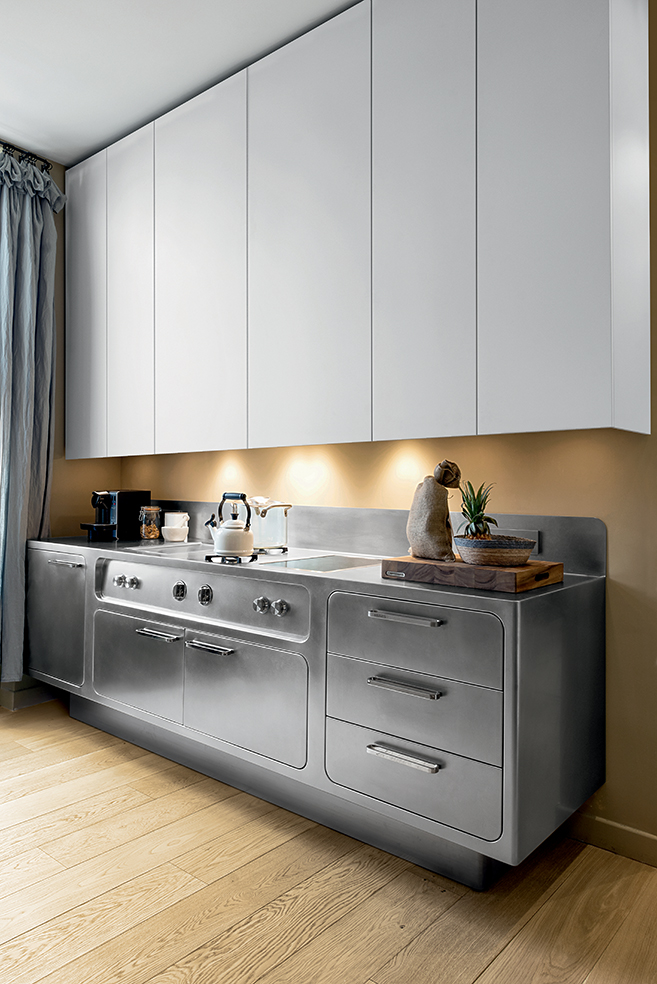
2. How to organise small kitchens
As we mentioned earlier, small kitchens need to be organised with precision to the nearest millimetre. If the space available is restricted, it is vital that everything is neat and tidy and easy to access.
For a clean-cut, simple yet striking look, you could opt for wall units all the way up to the ceiling. Just one word of warning: remember to stow away the items you use the least at the top.
However, exceedingly tall wall units and cabinets risk cluttering up the room and reducing its perceived dimensions. What’s the alternative? Mixing closed wall units with open-fronted compartments and shelves. Keeping kitchenware and utensils on show lightens up the space and gives the kitchen more character. And if you really do run out of room to store something in the kitchen, you could tidy it away in a sideboard or cupboard in the sitting room.
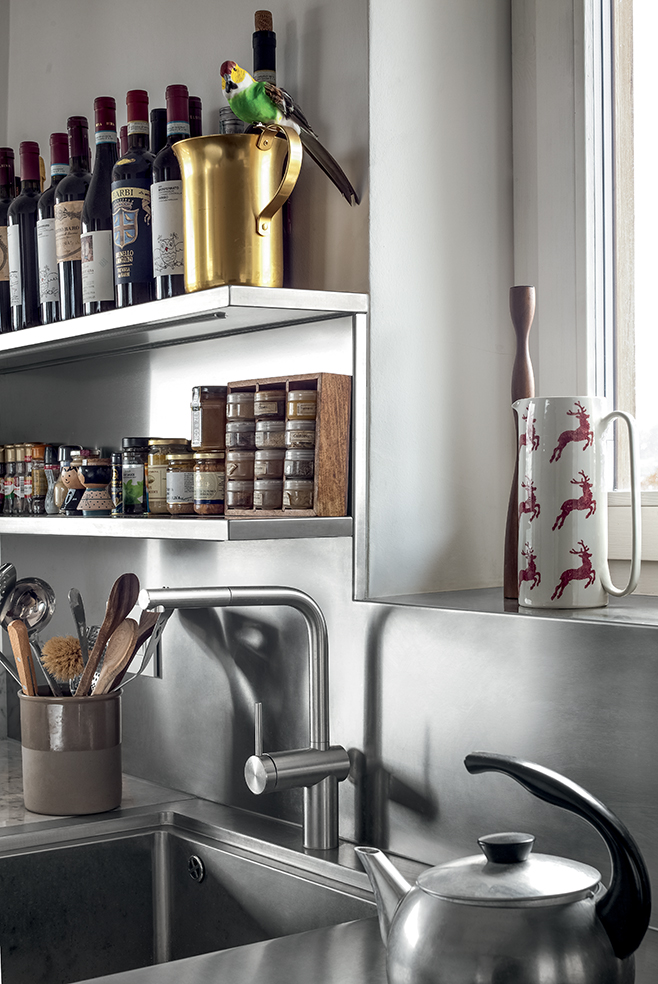
3. Multi-functionality and space-saving solutions
Multitasking. This is the key word for small designer kitchens. When the available space is limited, you need to come up with some clever solutions to make the room both functional and comfortable. Here are some ideas:
Accessorised tall units: vertical modules allow you to keep everything neat and tidy, but hidden away from view. They can not only house the larder unit and crockery, but also the operating station and appliances. From the food processor to the oven, the refrigerator and coffee maker, everything will disappear behind closed doors, and reappear as if by magic when needed. Ideal above all when the kitchen opens up onto the living room.
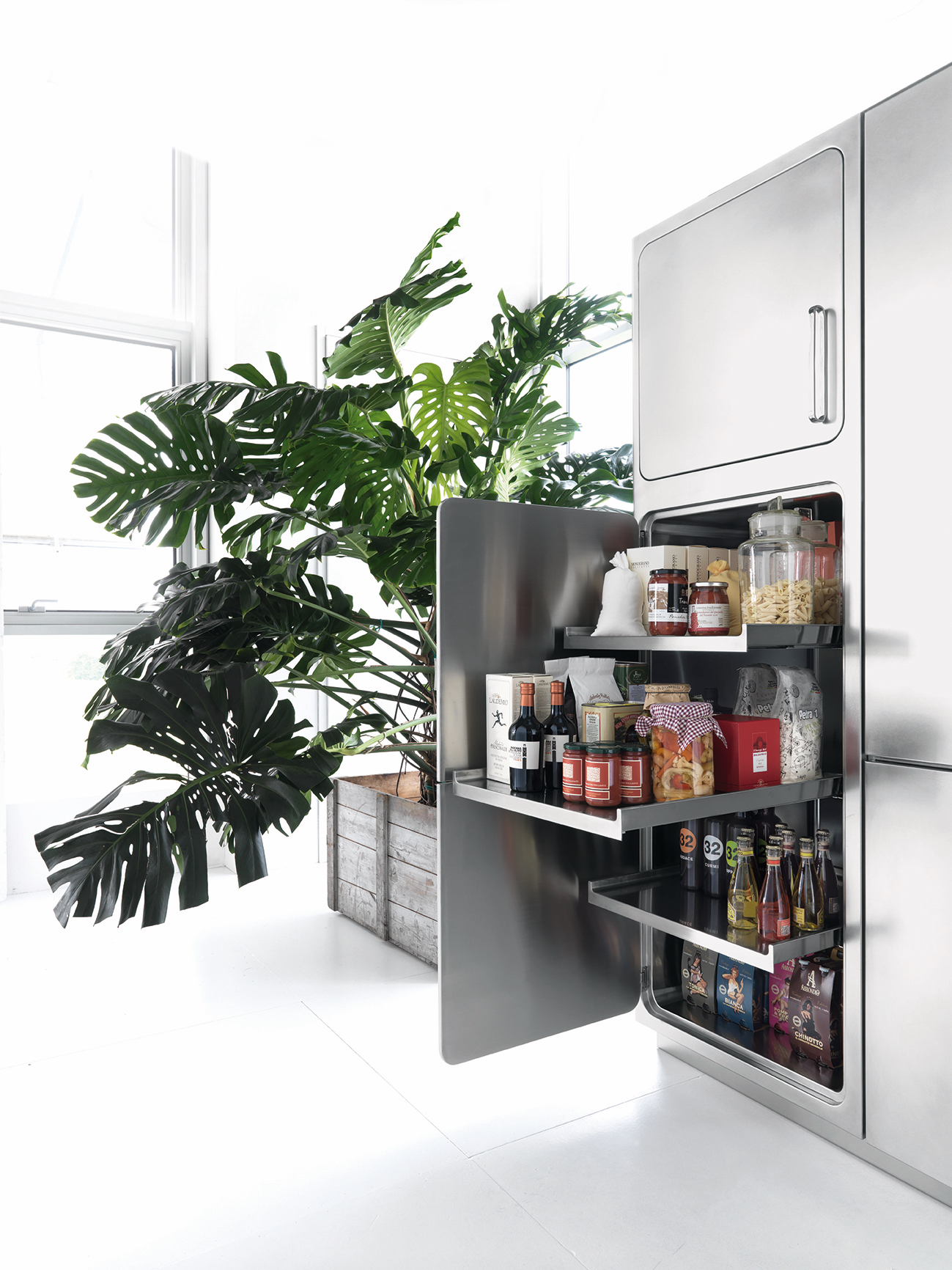
Pull-out baskets and shelves: pull-out systems are very useful to exploit small spaces. In fact, just 15 or 30 cm are enough for a fully-extracting larder unit. Pull-out baskets and shelves are based on telescopic runners and soft-closing systems. The most sophisticated models include an electric door-opening system, which adjusts the closing movement according to the load.
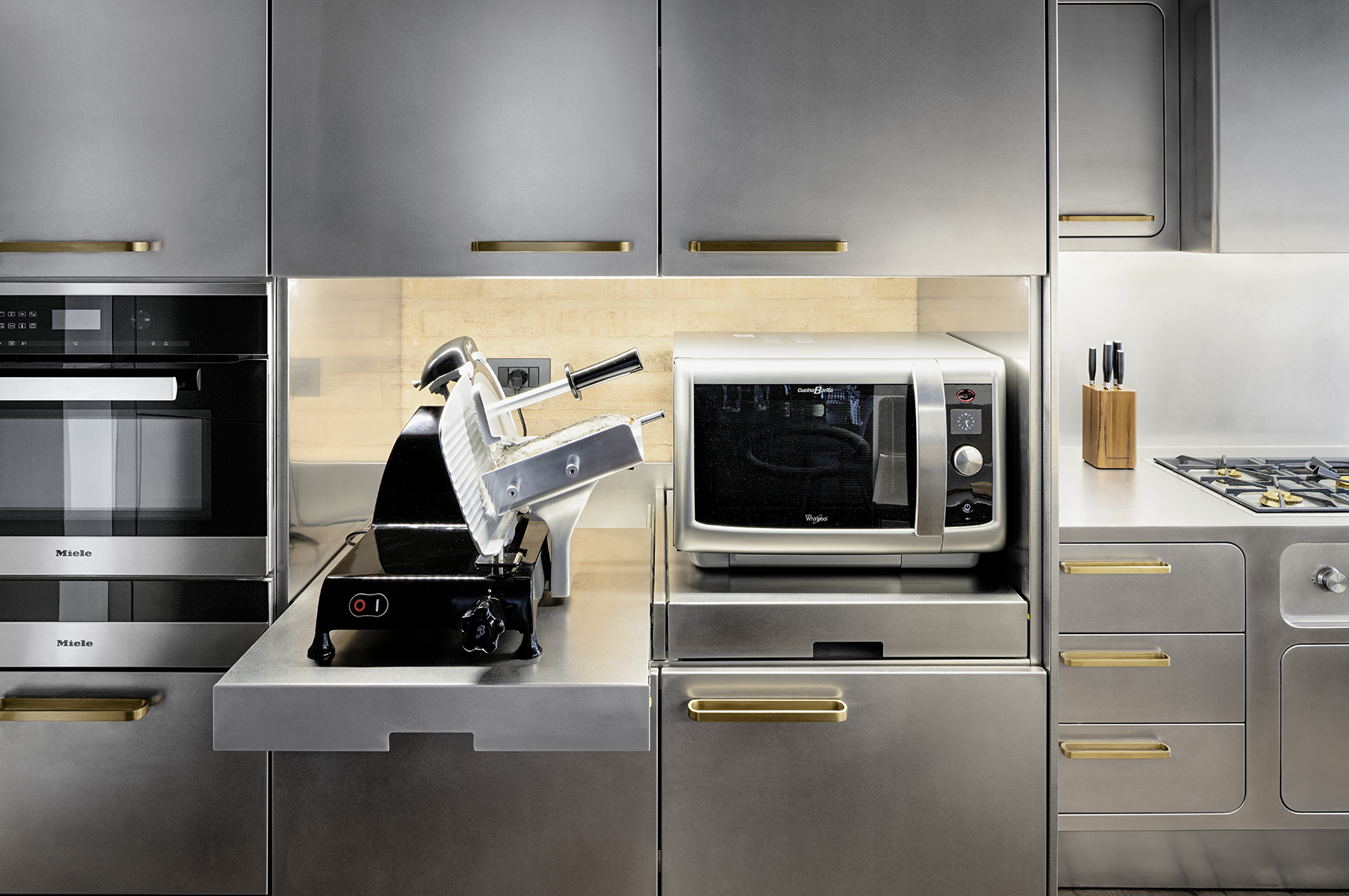
Pull-out top: hidden beneath the kitchen worktop, it makes its presence known only when necessary. The pull-out top can be used as an additional work surface, where you can roll out your dough to bake a pie or home-made pizza, or offer a practical counter for a quick snack.
Utensil rails: when you’re cooking, having everything you need at hand is a must. Stainless steel rails are the most convenient solution to keep your utensils close to the hob, ready for use. Ladles, graters or saucepans hanging on the wall will also add character to the kitchen.

Peninsula: a kitchen with a peninsula lends motion to the setting, and is also highly versatile. Indeed, the peninsula can be used as a counter, on which to eat breakfast, or as an additional work surface. The perfect multi-functional solution for small-size kitchens, where there often just isn’t enough room for a proper table.

4. Reflective materials
It is a well-known fact that mirrors have the power to make a room appear bigger than it is. Consequently, choosing a kitchen in stainless steel, a material that reflects light, could truly make the difference in a small room.
Stainless steel kitchens can be made in several finishes. Matt finishes in orbitally polished stainless steel reduce the visibility of fingerprints and create a warm, vintage atmosphere. Polished mirror-finish steel makes the room bright, giving it a decidedly contemporary feel.
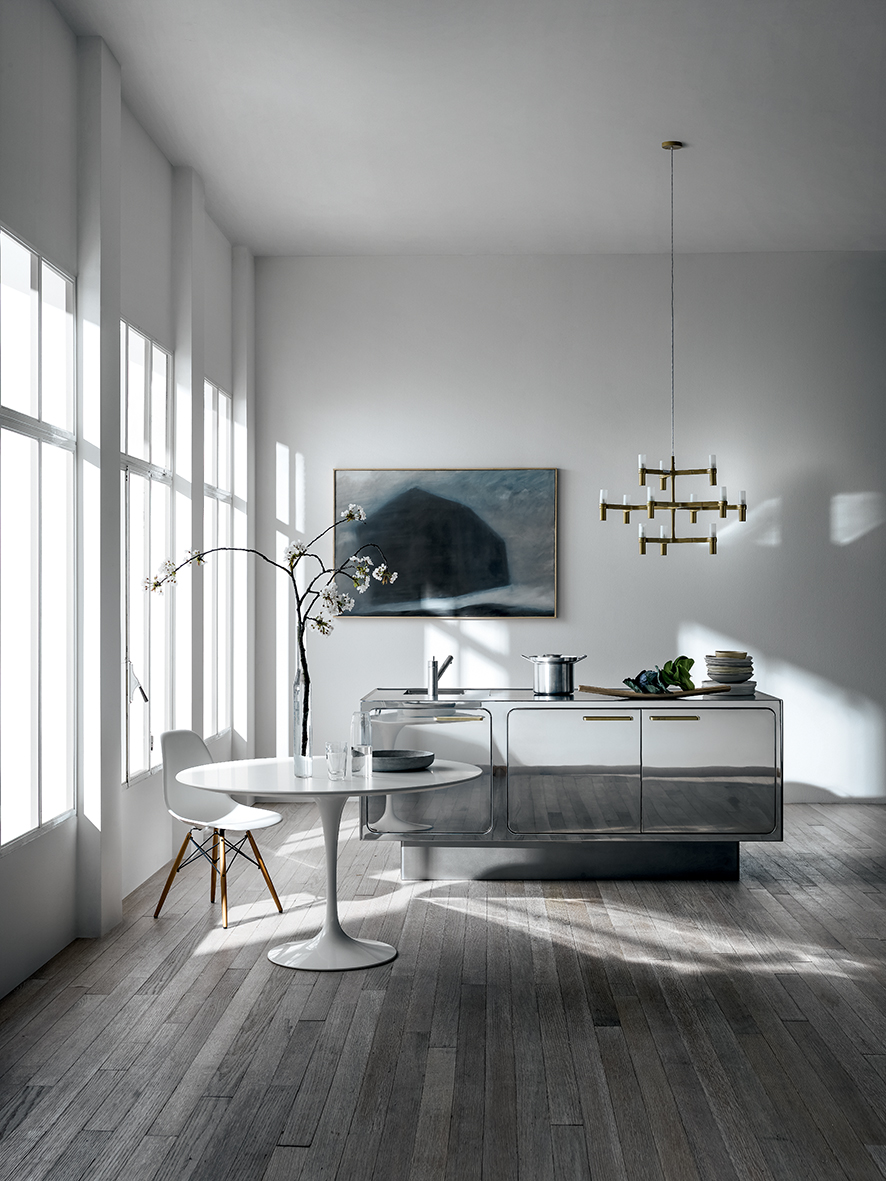
So, stainless steel is one of the best materials for small-size kitchens. All the more so because not only does it visibly expand the space, it is also an extremely hard-wearing, hygienic and easy to clean alloy. And it matches the most disparate surroundings: from industrial style kitchens to more classic ones.
5. Pale colours
White, sand, light grey and sage green. Pale colours are the right choice to “expand” a kitchen. In fact, sometimes all you need to do is lacquer the kitchen doors white or a gentle pastel hue to give the impression of a bigger and brighter room. Especially if the door lacquering is glossy and, consequently, light-reflecting.
Another tip: for small kitchens, it’s best to focus on a monochrome look or on two colours at most. A small-size kitchen should not be overburdened. If anything, you can add splashes of a bolder colour, playing with fabrics and accessories.
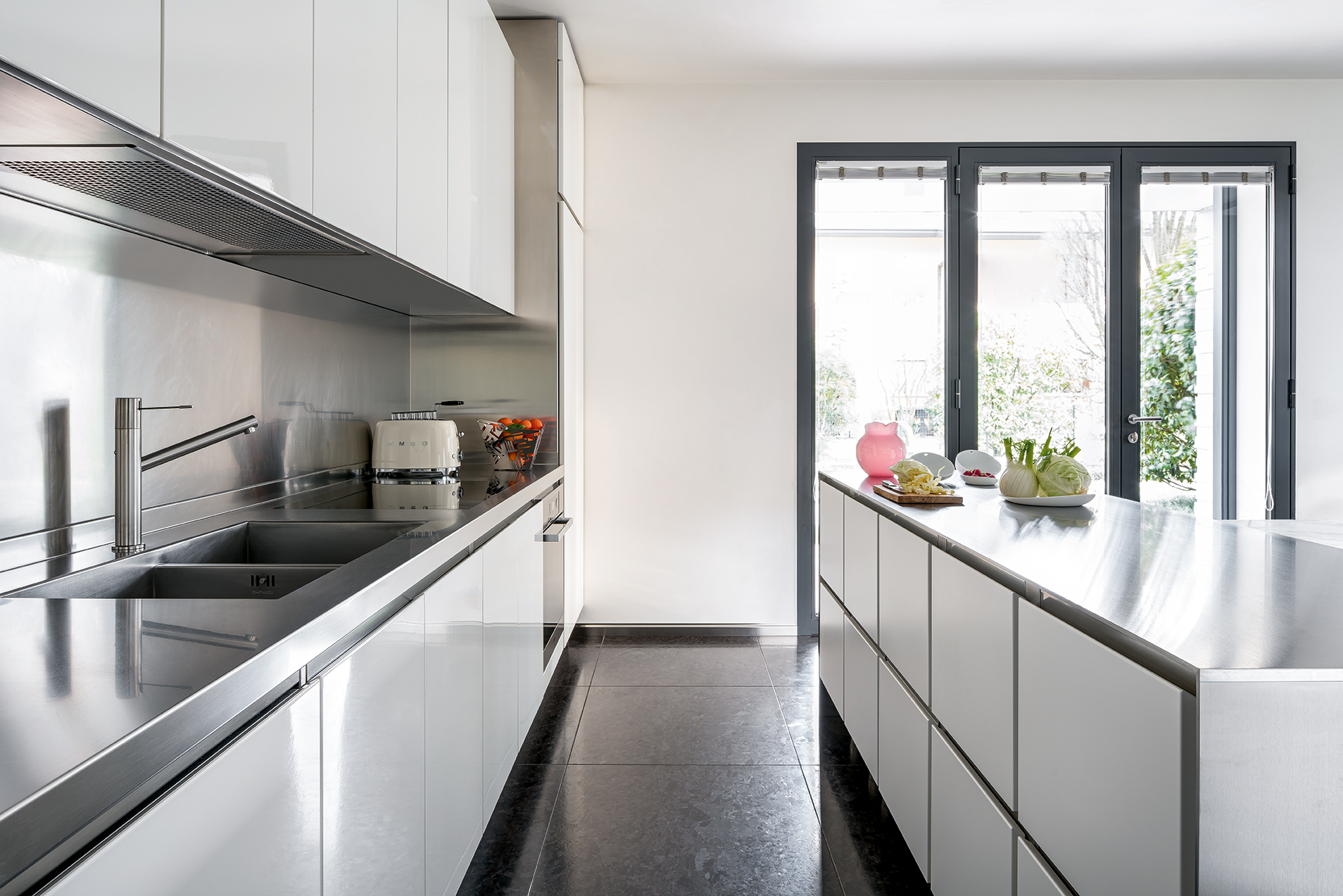
Abimis professionally-derived kitchens
All Abimis kitchens are tailor-made to make the most of every centimetre available and adapt completely to any setting. They are made of stainless steel, a material with a reflective effect that amplifies the perception of space, especially in the polished mirror finish. They can be lacquered in any colour selected by the customer, implementing the paint process used in the automotive industry, and therefore extremely hard-wearing.
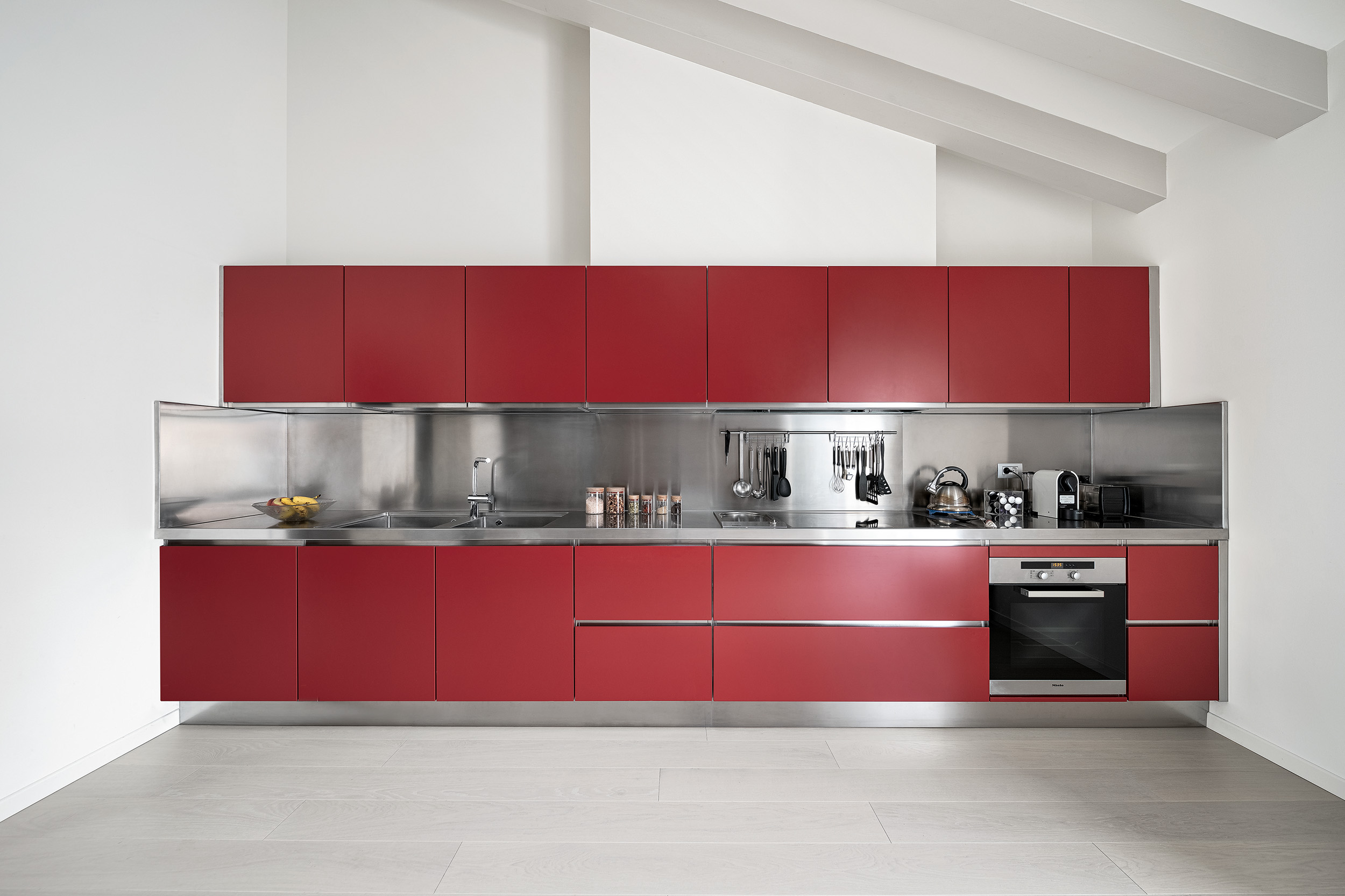
They are multi-accessorised kitchens, designed to organise space in the most functional and practical way. Lastly, Abimis kitchens are completely customisable, to guarantee maximum flexibility and the highest performance levels.
With Abimis, you can cook like a genuine chef, even in small-size kitchens.

